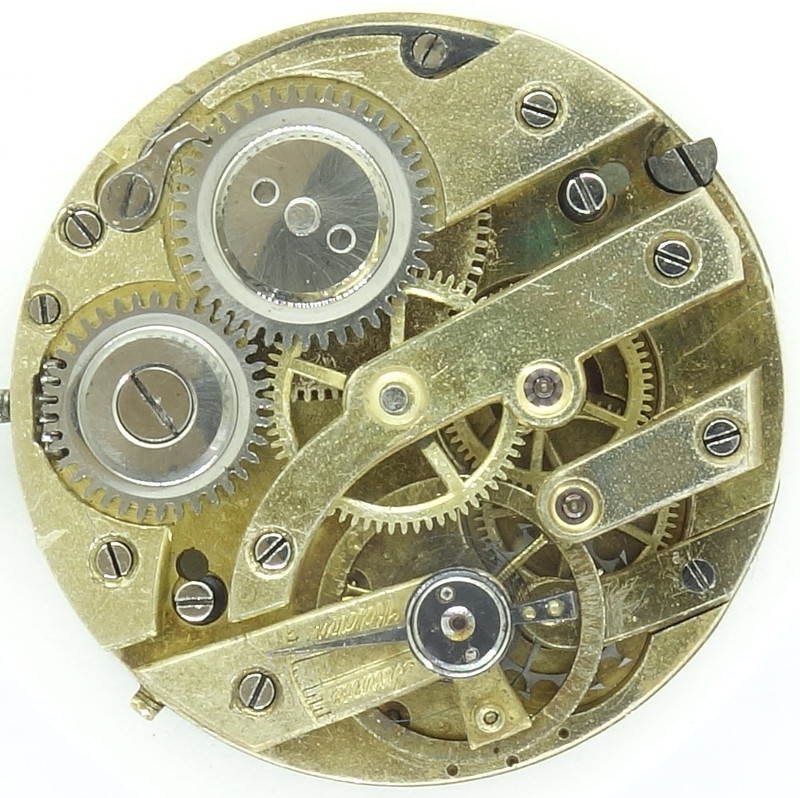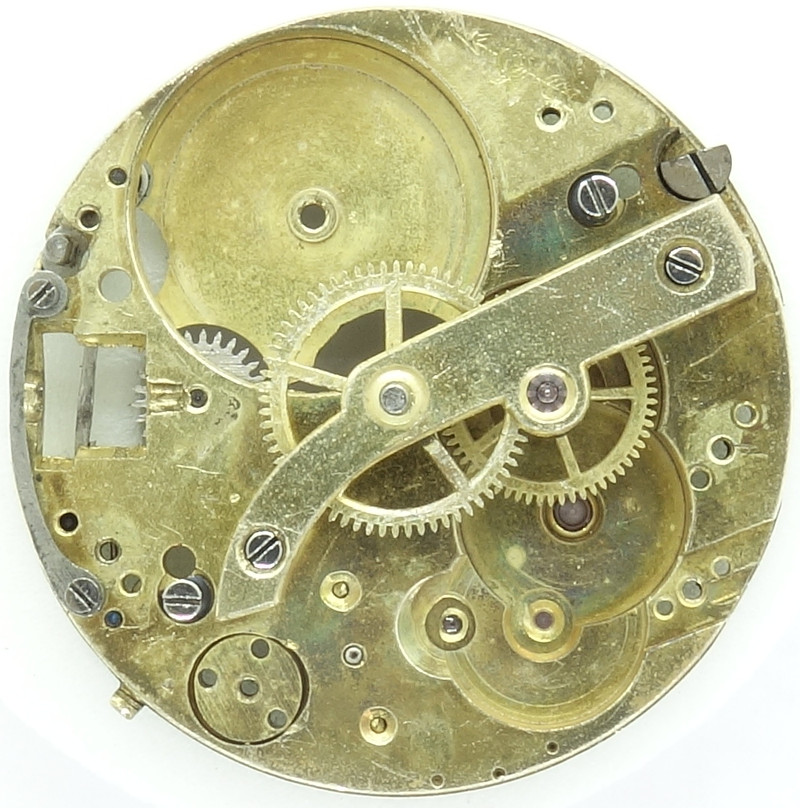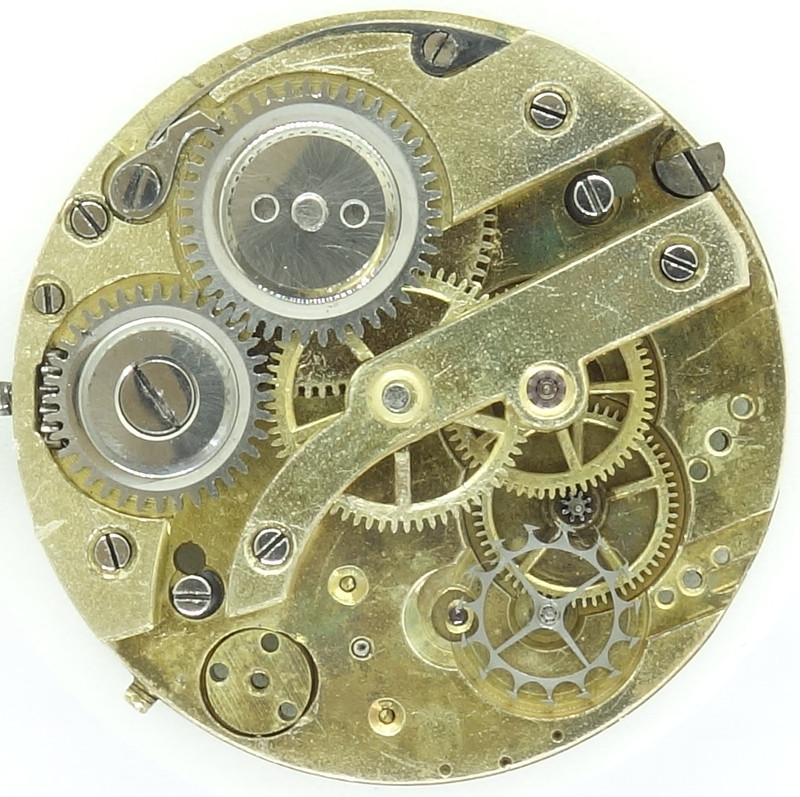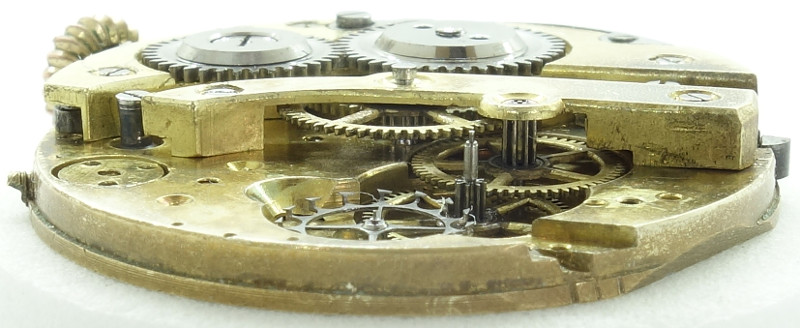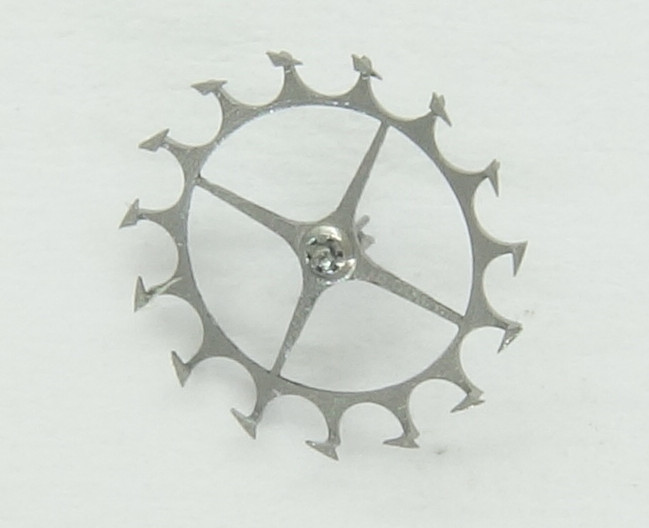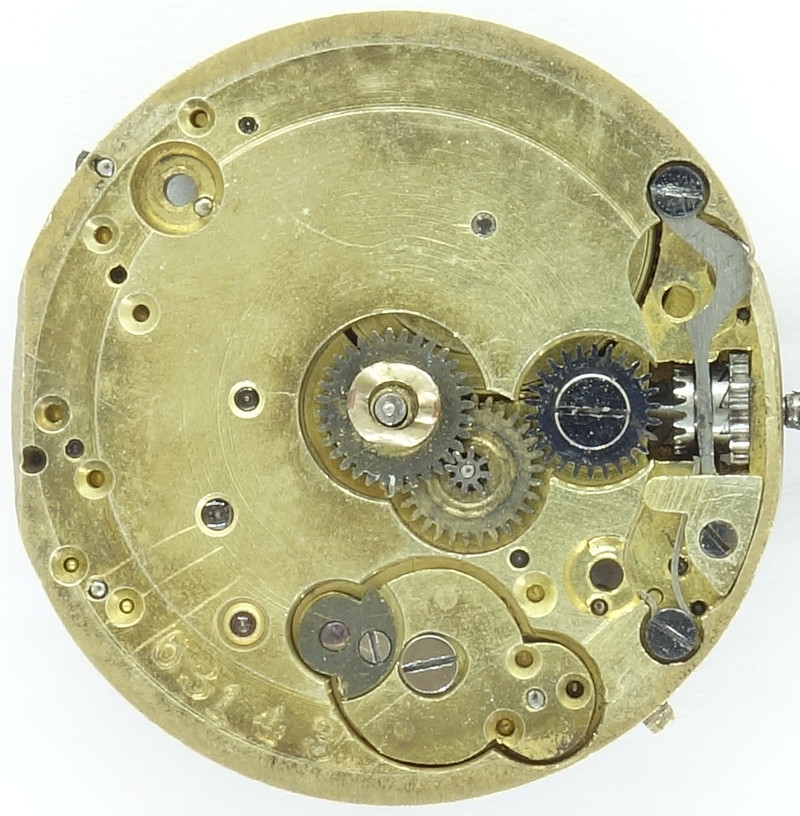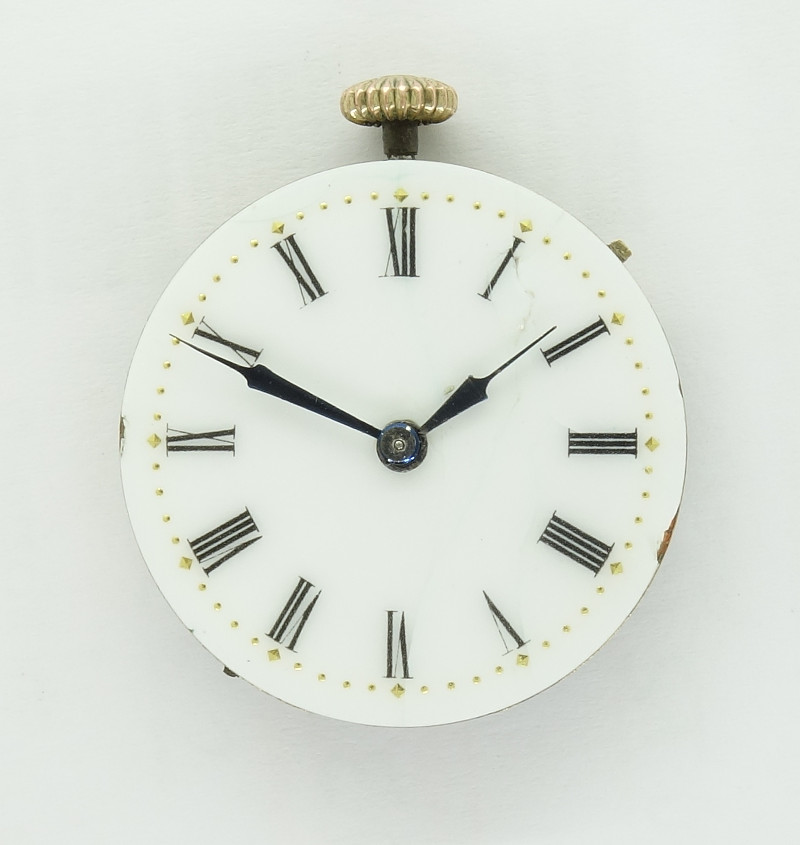Description
Around the turn of the century, it was common, that less expensive pocket watches used a cylinder escapement movement. One of them was the FHF 11’’’, a 11 1/2 ligne movement from Fontainemelon in Switzerland.
In the specimen shown here, it was not possible to release all gears, so minute- and third wheel are still mounted unter the small bridge.
As most cylinder movements, the FHF 11’’’ uses 10 Jewels, too. Four for the balance wheel axle, two for the cylinder wheel, two for the seconds wheel and two for the third wheel.
Minute wheel and mainspring barrel turn very slow and with strong force, so it was sufficient to use brass bearings for them.
The gear train is standard for a cylinder movement. It consists of mainspring barrel, directly driven center minute wheel, third wheel, seconds wheel and steel cylinder wheel.
Since the tips of the cylinder wheel always connect with the balance axle, the balance can never beat really free. This has got a negative impact on the precision, even good quality cylinder movements have got a daily deviation in the minute or at least high two digit seconds range.
It doesn’t help much either, that the effective length of the hairspring can be fine tuned with a long regulator arm.
Aesthetically, the filigree cylinder wheel with its 15 semicirular cutouts and its 15 teeth, which engage with the hollow cylinder of the balance wheel, is always very pleasant.
The use of a yoke keyless works is typical for the time around 1900. With the help of a small pin, which acts on the setting lever at 2 o’clock, the user can switch between winding the movement and setting the time.
